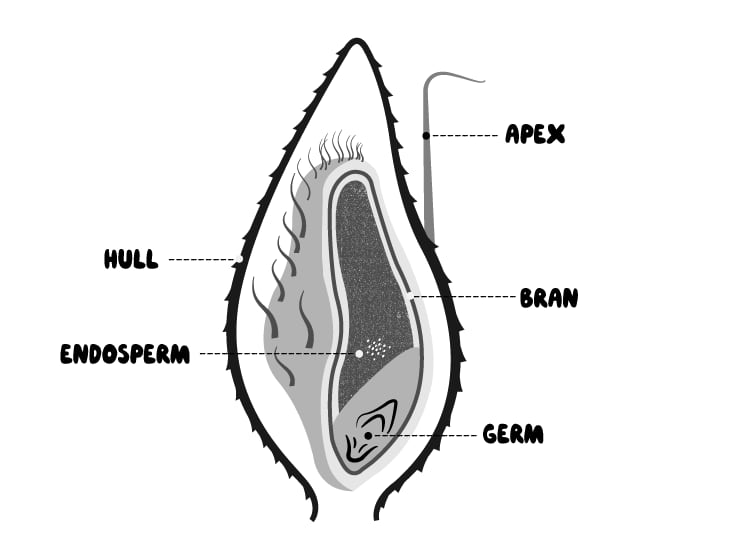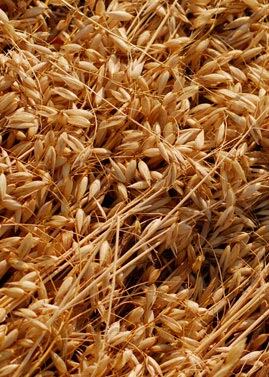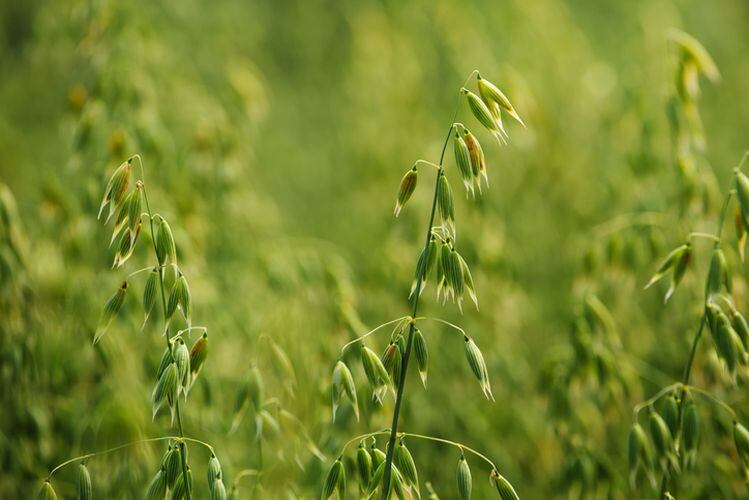Rivals beg to differ, however, highlighting the complexity of the issue as the FDA seeks to pin down which ingredients the food industry has become accustomed to describing as dietary fibers should really be classified as such for regulatory purposes.
Uncertainty over the status of oat hull fiber has arisen in part due to the fact that the FDA lists it as one of 26 isolated and synthetic non-digestible carbohydrates subject to a scientific review* – which has left suppliers of these ingredients in a state of regulatory limbo until the FDA makes a decision.
Oat hull fiber’s inclusion in this list reflected the FDA’s belief (at the time of publication last year) that all oat hull fiber was produced via a chemical process utilizing hydrogen peroxide that strips it of lignin and other native nutrients, thereby rendering it not intrinsic or intact, claimed Grain Millers chief science officer Roberto Serrano.
Grain Millers does not use the conventional patented hydrogen peroxide method
However, Grain Millers has pioneered the use of a proprietary milling process that leaves all of the hull’s lignin and other intrinsic plant components intact in the finished product, which means that its oat hull fiber automatically meets the definition of intact and intrinsic dietary fiber, he told FoodNavigator-USA (read the firm’s public comment to this effect HERE).

“We’ve had meetings with the FDA and explained our production method, as well as providing details of the clinical studies conducted on our fiber, so we have both structure and function data.
"We haven’t had a formal acknowledgement, but we are very confident that the FDA will recognize our oat hull fiber – which is not produced using the conventional patented hydrogen peroxide method – meets its definition of ‘non-digestible carbohydrates (with 3 or more monomeric units), and lignin that are intrinsic and intact in plants.’
“Health Canada has already recognized our oat hull fiber as a dietary fiber [via a letter issued in 2009] and we’ve also convened an expert panel which has determined that our oat hull fiber is an intrinsic and intact dietary fiber under 21 CFR 101.9 (c) (6) (i).”

Grain Millers’ oat hull fiber contains 86% dietary fiber, coupled with potassium, calcium, iron and magnesium, plus small amounts of B vitamins, antioxidants, tocopherols and tocotrienols.
It is processed via a “proprietary mechanical process involving steam and pressure…a hydrothermal process that’s followed by mechanical size reduction and controlled size exclusion that does not introduce any refinement that is introduced via classical chemical modification of ligno-cellulosic materials,” says chief science officer Roberto Serrano.
“It’s a trade secret, rather than something we’ve patented.”
“Grain Millers doesn’t use caustic chemicals and removes neither lignin nor anything else from the raw oat hull, meaning our product exactly fits the definition of intrinsic and intact dietary fiber.”
Roberto Serrano, chief science officer, Grain Millers
What is the regulatory status of oat hull fibers produced using conventional, chemical, methods?
But what about other producers of oat hull fiber that process it using different methods? Do these qualify as intact and intrinsic, and if not, do they qualify as isolated and synthetic non-digestible carbs that confer a health benefit recognized by the FDA, and do they all have to submit citizen’s petitions substantiating their claims?
According to a public comment filed by oat hull fiber producer J. Rettenmaier USA, its Vitacel oat hull fiber qualifies as a dietary fiber of the isolated and synthetic variety, and is backed by clinical trials that support its beneficial physiological effects of laxation (i.e., the elimination of fecal waste) and improvement of insulin sensitivity.
It has not, however, submitted a formal citizen’s petition to this effect, noted Serrano, who argued that J. Rettenmaier’s chemical process lowers the lignin content of the fiber and strips it of other food components that may confer a health benefit. He also queried whether Vitacel oat fiber met the definition of isolated and synthetic fibers delivering specific health benefits (as defined by the FDA).
According to Cathy Peterson, regulatory and commercialization manager at J. Rettenmaier USA, however, Vitacel oat hull fiber does in fact meet the FDA’s definition of isolated or synthetic dietary fibers that confer certain health benefits.
Clinical data
While a clinical trial exploring the fiber’s effects on insulin sensitivity was conducted with a pre-diabetic population – as opposed to a healthy population – Peterson claimed that the FDA had confirmed that the pre-diabetic population (those at risk of developing type 2 diabetes, as opposed to full-blown diabetics) was an appropriate population for a clinical trial, given that it is “almost impossible to show an improvement in insulin sensitivity in a healthy population….”
She told FoodNavigator-USA: “The FDA includes high risk populations in their reviews, so studies on subjects with metabolic syndrome are acceptable. I confirmed this directly with the FDA.
“In terms of demonstrating the beneficial effect of laxation, we are hopeful that the FDA will accept the clinical trials on oat fiber based on the comments we submitted as well as those submitted by Joanne Slavin. She stated: ‘My professional opinion is that fecal weight, both wet and dry, is an objective marker of digestive health and should be an important aspect of the body of evidence on laxation effects of isolated fibers.’”
No oat hull fiber companies have submitted citizen’s petitions to the FDA
Asked whether any oat fiber companies have submitted citizen’s petitions to the FDA, Serrano said: “No oat product company… has submitted a citizen petition asking that any oat hull product or ingredient be accepted by FDA as isolated or synthetic dietary fiber.”
He added: “I believe that FDA is doing the right thing [by suggesting firms submit petitions on ingredients that FDA has raised a question mark over] because I think that the evidence behind some of the fibers on the list is questionable.”
Peterson, however, claimed that J. Rettenmaier USA had not submitted a petition, because it was not necessary: “We’ve been in touch with Dr Paula Trumbo [director, nutrition programs, FDA] and were told that not all of the 26 fibers had to submit citizen’s petitions although several firms have done so, in order to get ahead of the process.”
She added: “As long as a fiber is listed in the FDA’s Science Review of isolated and synthetic non-digestible carbohydrates, a Citizen Petition is not required. The FDA will make a final decision on whether or not the fibers listed in this document meet the new definition of dietary fiber after they review any additional clinical trials or other scientific data that they received.”

Processing methods
As for the chemical process JRS uses to manufacture its oat hull fiber, Peterson added: “The benefit of adding oat hull fiber to a food is to deliver dietary fiber to reach either ‘good’ or ‘excellent’ source of fiber nutrient content claims, or to reduce calories. This is not hindered by wet processing methods.
“Even though J Rettenmaier (JRS) uses a wet processing scenario, nutrients and minerals such as protein, calcium and iron remain in the fiber. There is a decrease in potassium and an increase in sodium as the level of processing changes, but since the original level of potassium in the oat hull is not close to contributing in a meaningful way to the RDI, the difference is not significant.
“The comments submitted to the FDA on behalf of Grain Millers describe several patents and methods of processing oat fibers from oat hulls. JRS does not specifically use any of the ‘conventional, patented methodologies’ to produce oat fiber. Some of the data on mineral content, specifically sodium, is not relevant to J Rettenmaier’s current portfolio of fibers.”
*While food manufacturers can continue to use these 26 non-digestible carbohydrates, they don’t know if they will be able to count them as grams of dietary fiber on the new-look Nutrition Facts label, which was slated to come into effect next July but may now be delayed until January 2020.
What does the FDA consider to be evidence of a beneficial physiological effect from an isolated or synthetic fiber?
According to its November 2016 draft guidance, “There are a number of beneficial physiological effects associated with the consumption of dietary fibers, such as attenuation of blood glucose and cholesterol concentration and improved laxation… It is important that the physiological effect… be associated with a specific physiological endpoint that has been shown to have a beneficial physiological effect to human health.
“Recognized measures of improved laxation (elimination of fecal waste) include reduced transit time of food through the intestinal tract and increased rates of defecation (e.g., stools per day). Data on ease of defecation and reduced complaint of defecation is also considered a measure of improved laxation. While intake of an added non-digestible carbohydrate can increase fecal or stool weight, an increase in fecal weight does not necessarily indicate improved bowel function.”
Growth opportunities for oat hull fiber
Grain Millers is seeing strong demand for its oat fibers and is expanding its production capacity, says chief science officer Roberto Serrano. “We can’t keep up with demand in bakery, snacks, nutrition bars and other categories. In many cases customers are interested in oat hull fiber for fiber supplementation or enrichment, but it also has other functionality, such as adding moistness and increasing shelf-life in bars, for example.”
Some of the most exciting applications work is in beverages, he added: “Getting insoluble fiber to suspend in a beverage system is challenging, but we’ve been working on methods to reduce the size of the particles to sub-20 microns, so they can achieve suspendibility and are so small that texturally you won’t sense the sandiness associated with insoluble fibers.”
But are consumers – and food marketers - as enthusiastic about dietary fiber as they should be, given that most Americans don’t get enough?
Perhaps not, but things are changing rapidly, claimed Serrano.
“The gastric system has been neglected because of the nature of it, that is to say it is not the subject of polite conversation and taboos have prevented people from talking about it.
“But the medical community is recognizing that our gastric system is one of the most important and most neglected organs in our body that can impact everything we do in our daily lives.”
